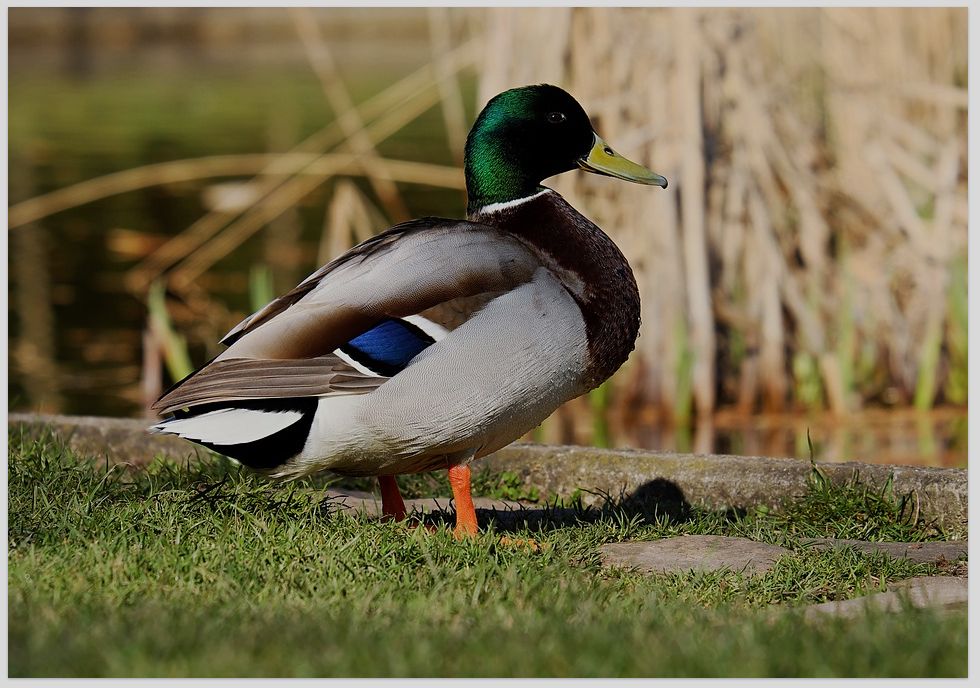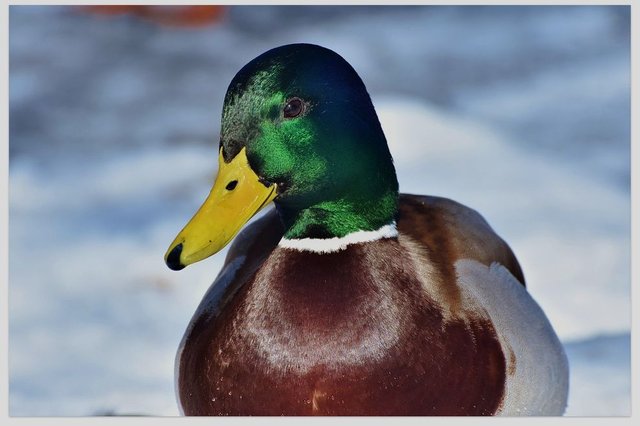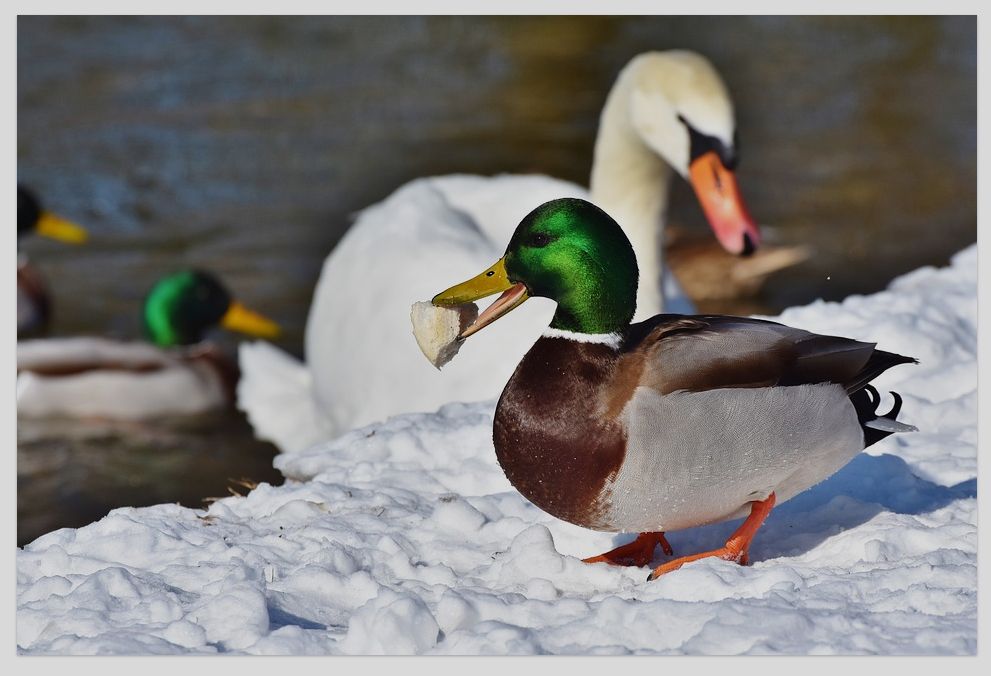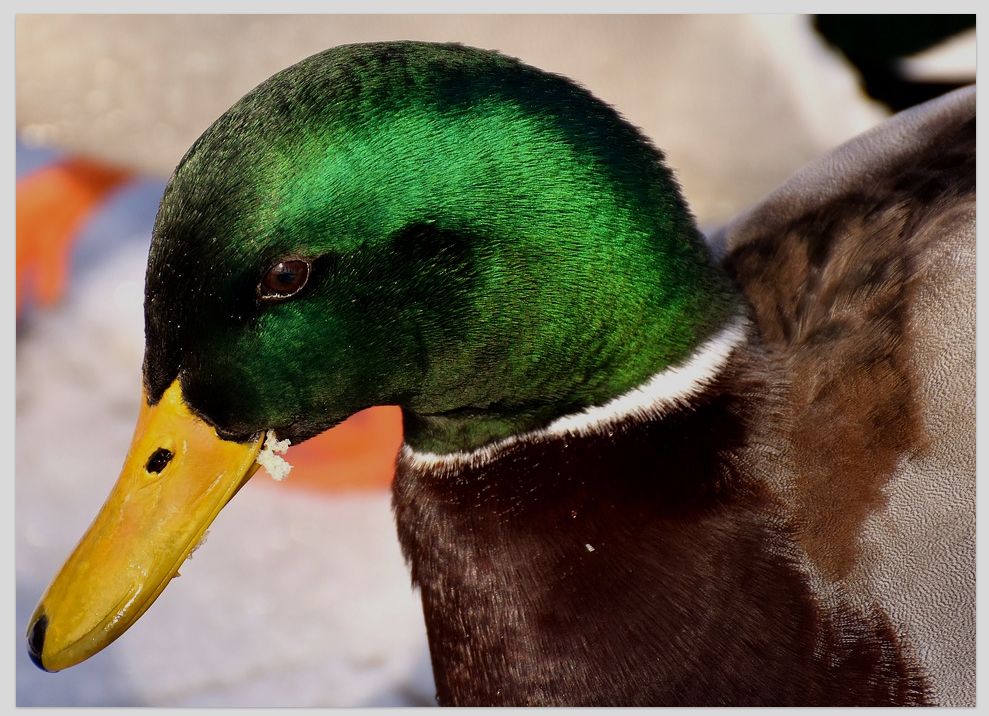Ducks are birds of World

Ducks are winged animals. Ducks are likewise called 'Waterfowl' since they are typically found in places where there is water like lakes, streams and waterways. Ducks are identified with Geese and Swans. Ducks are here and there mistaken for a few sorts of disconnected water winged animals with comparable structures, for example, crackpots (an oceanic flying creature found in numerous parts of North America and northern Europe) or grebes (freshwater jumping fowls) and coots (medium-sized water flying creatures which are individuals from the Rail Bird family).

DUCK CHARACTERISTICS
Ducks are littler than their relatives (swans and geese). Ducks likewise have shorter necks and wings and a heavy body.
A female duck is known as a 'hen', they are distinguished by their extremely dull, darker quills. The females have dull-darker plumes with the goal that they can escape foes and predators. They can likewise disguise themselves in their homes and furthermore secure their young.
A male duck is known as a 'drake', you can recognize the male duck by its splendidly shaded quills. They utilize these shaded plumes to draw in the female ducks for mating. Here is a flawlessly hued Drake with a purple plumage, gleaming green head shading, shiny white body and dim wings with blue markings.
The guys utilize their vivid plumage to draw in females. Be that as it may, they will lose or shed their vivid quills when the females are occupied with incubating the eggs. The guys will now resemble the female in shading and will be not able fly incidentally. They will shed again in early Autumn and get back their vivid quills and have the capacity to fly once more. The females likewise shed. They supplant every one of their quills and get new ones after their ducklings are brought forth.
Ducks have webbed feet, which are intended for swimming. Their webbed feet act like oars for the ducks. The reason ducks can swim in frosty water is their astonishing circulatory framework. Their veins are laid out near each other in their legs and feet in a system that permits the warm and cool blood to trade warm. This permits the warm blood going from the body into the feet to warm the cooler blood re-entering the body from the feet, and the blood heading off to the feet is cooled enough that the chilly does not trouble the duck. In this way the duck's feet can endure the frosty and not trouble them. All winged animals have this circulatory framework in their legs and feet.
A duck has water-evidence quills. There is an extraordinary organ called the 'Dress Gland' close to the ducks tail. This minor organ produces oil which the duck uses to coat its quills.
The duck gets the oil with its head and snout, and afterward spreads everything over its body to make the external plumes waterproof. Without this defensive obstruction, a ducks quills would progress toward becoming water-logged and in light of the fact that they spend their entire lives around and in water, this water-verification boundary is critical. Underneath the water-verification coat are fleecy and delicate plumes which keep the duck warm.
The ducks mouth is known as a nose or bill. It is normally expansive and level and has lines of fine indents along the edge called 'lamellae'. The lamellae causes the duck to grasp its sustenance with the goal that it won't slip off.
In any case, ducks bill comes in various shapes and sizes. The state of the mouth and body decides how the duck will chase for its sustenance.
DUCK Behavior
Ducks keep clean by trimming themselves. Ducks do this by putting their heads in clever positions and putting their bills into their body. Ducks dress themselves frequently. Dressing additionally expels parasites, evacuates scales which cover recently growing quills and furthermore includes the expulsion of spreading oil over clean plumes.

DUCK HABITATS
Numerous types of duck are incidentally flightless while shedding. Ducks search out secured territories with a decent sustenance supply amid this period. They for the most part shed before relocating.
Ducks are found in wetlands, bogs, lakes, streams, lakes and seas. This is on the grounds that ducks love the water. A few types of ducks move or travel yearns removes each year to breed. Ducks for the most part go to hotter territories or where the water does not solidify with the goal that they can rest and raise their young. The separation might be a large number of miles away. Ducks are discovered wherever on the planet with the exception of the Antartica which is excessively frosty for them.
DUCK LIFE SPAN
Ducks can live from 2 – 20 years, contingent upon species and whether they are wild ducks or ducks in bondage. A wild duck can live 20 years or more. Residential ducks regularly live 10 – 15 years in imprisonment. The world record is a Mallard Drake that lived to a ready maturity of 27 years.
DUCKS AND THEIR FEEDING HABITS
Shovelers – these ducks have wide bills and filter their sustenance for bugs, nails and seed from the mud.
Plunging ducks and Sea ducks rummage profound submerged. To have the capacity to submerge all the more effortlessly, the jumping ducks are heavier than fiddling ducks and in this way have more trouble taking off to fly. These ducks have long and limit snouts. Their tight bills are likewise secured will saw-like edges which help them to get angle.
Dallying ducks feast upon the surface of water or ashore, or as profound as they can reach by up-closure without totally submerging. Their bills are wide and short. Fiddling ducks have small lines of plates along within the bill called 'lamellae' like a whales baleen. These let them sift water through of the side of their noses and keep sustenance inside. Dallying ducks eat plants, seeds, grasses and other little creepy crawlies and creatures that they find on or under the water. Normally they stick their tails noticeable all around and extend their heads into the water to achieve their nourishment.
Dilettantes ordinarily have sparkly shaded fixes on their wings. The local ducks are amateurs as well. They are descendents of the Mallards. Fiddling ducks take off from the water in brisk bounces. Ducks with longer necks jump with their head down into the shallow water and get their sustenance.

DUCK REPRODUCTION
Ducks normally search for a mate or accomplice in winter. Male ducks will draw in the female ducks with their bright plumage or quills. The female ducks will then lead the male ducks to their reproducing ground in spring. The rearing ground will for the most part be where the female duck was incubated. The female duck assembles her home with grass or reeds or even in a gap in a tree.
The male duck will monitor their region by pursuing without end different couples. Once the female lays 5 – 12 eggs, she will sit on her eggs to keep them warm with the goal that they can bring forth into ducklings. The male ducks then again, will be with the other male ducks.
 ![Screenshot_11 copy.jpg]
![Screenshot_11 copy.jpg]
The eggs will bring forth inside 28 days ordinarily, with the exception of the Muscovy duck which takes around 35 days to hatch.The mother duck will keep her brood of ducklings together to shield them from predators. Creatures like the racoon, turtles, falcons, huge fish and snakes are a ducks fundamental predators and they will eat the ducklings. Ducklings can fly inside 5 – two months. Their quills grow quick.
At the point when the youthful are prepared to fly, every one of the ducks will accumulate in groups on vast lakes, bogs or the sea to move to their wintering home. At the point when the ducks fly, they more often than not do as such in an 'Angular' or a long queue.
Intriguing DUCK FACTS
A hen makes an uproarious QUACK sound while the drake has a rough, stifled call.
Touching a duckling does not keep the mother duck from dealing with it. It is however best to allow ducklings to sit unbothered so as not to frighten the mother duck off or inadvertently harm them.

Ducks lay down with a large portion of their brains wakeful. Ducks will probably lay down with one eye open when they are situated on the edge of dozing gatherings. Ducks can recognize predators in under a moment.
Duck eggshells have minor gaps (pores) that enable it to relax. A hen's eggs can have 7500 pores, most found at the limit end of the egg. Respiratory gasses and additionally water vapor go through these pores enabling the egg to relax.
Infant ducks are precocial significance they are conceived with their eyes completely open, with a warm layer of down and are not completely dependant on their folks for sustenance. Ducklings are prepared to leave the home inside hours of bring forth.
A 'grip' is the aggregate number of eggs laid by one winged animal amid one settling session. Grasp measure influenced by innate and ecological variables. At the point when sustenance is copious, fowls lay more eggs.
A brood is the aggregate number of hatchlings, or ducklings in a grip.
Ducks have great vision and they find in shading.
( )
)
Image source: pixabay dot com
Great Post
thank you dear gguy
Get Daily Reward By Uploading Your Photography on
Woow!! what an excellent post with very nice photographs.
nice art!
Hi
Friend, you are writing very well I love it very much I hope the next day to write something better is our gift.
Sometimes you write me.
Excellent writing, I am the first reader I am very happy to write about you. Write something better in the future.
Sometimes you write me.
Duck is the most beautiful most beautiful necklace